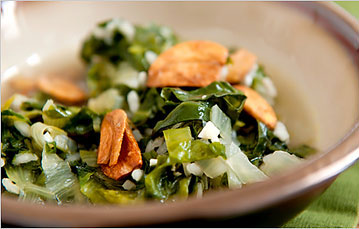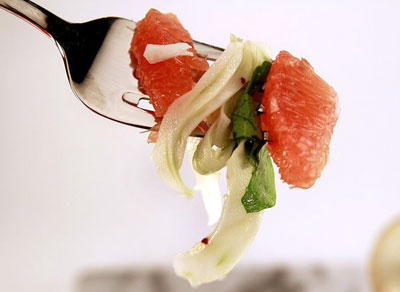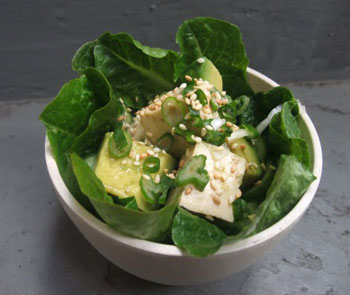From the New York Times
 Like radicchio and other bitter, tough greens, escarole can survive the winter in many places and appear early in spring. But unlike radicchio, escarole is inexpensive. And it’s more versatile: it tastes better cooked than does its round, red cousin.
Like radicchio and other bitter, tough greens, escarole can survive the winter in many places and appear early in spring. But unlike radicchio, escarole is inexpensive. And it’s more versatile: it tastes better cooked than does its round, red cousin.
In fact, escarole is at its most appealing when sautéed or braised, as the flavor becomes softer and even a bit buttery. It’s especially excellent with loads of garlic, and this traditional Italian soup — one of my go-to comfort recipes — is a prime example.
Though you might try other bitter vegetables here (watercress, curly endive, even celery come to mind), you definitely want short-grain rice, the kind used for risotto — arborio being the most familiar, though any short-grain rice, including those from Asia, will work well. All have a high starch content, so they turn creamy when they absorb liquid (which, by the way, should be homemade chicken stock, if at all possible). My second choice would be good vegetable or mushroom stock.

 Sometimes it’s all about the cut. Take asparagus. Everyone loves the long, lanky, sexy look of a whole asparagus spear. (Sorry—sounds like I’m describing a brand of Gap jeans). Why would you want to wreck that by cutting it up?
Sometimes it’s all about the cut. Take asparagus. Everyone loves the long, lanky, sexy look of a whole asparagus spear. (Sorry—sounds like I’m describing a brand of Gap jeans). Why would you want to wreck that by cutting it up? While I wait (and wait) for our local asparagus, it occurs to me that everyone else is not waiting. The grocery stores are full of asparagus (from elsewhere, wherever that is) and it is hard to walk down the produce aisles without snatching up a bunch. I understand, really I do, and that is probably why my two blogs on asparagus from last year are getting hit up a lot these days. So okay, I can’t be my stubborn self and wait another month to offer up more asparagus recipes. Especially because there are about a gazillion different ways to cook asparagus—almost all of them pretty darn quick—so I can come back to this provocative vegetable again. Soon.
While I wait (and wait) for our local asparagus, it occurs to me that everyone else is not waiting. The grocery stores are full of asparagus (from elsewhere, wherever that is) and it is hard to walk down the produce aisles without snatching up a bunch. I understand, really I do, and that is probably why my two blogs on asparagus from last year are getting hit up a lot these days. So okay, I can’t be my stubborn self and wait another month to offer up more asparagus recipes. Especially because there are about a gazillion different ways to cook asparagus—almost all of them pretty darn quick—so I can come back to this provocative vegetable again. Soon. The cook's year can be divided in two: tomato and not-tomato. But sometimes, even the best-intentioned, most locavore-crazy among us so crave a sweet, tart bite in our salads that we break down and grab one of those cottony out-of-season tennis balls. You've done it too. Don't try to deny it.
The cook's year can be divided in two: tomato and not-tomato. But sometimes, even the best-intentioned, most locavore-crazy among us so crave a sweet, tart bite in our salads that we break down and grab one of those cottony out-of-season tennis balls. You've done it too. Don't try to deny it. This is a zen salad. For one thing, like meditation, it requires slowing down. Normally salad is something you throw together at the last minute. Not this one. Patience, little grasshopper. You need to marinate the tofu overnight. It's also simple and straightforward. And it requires no oil. I know what you're thinking, what does THAT have to do with being zen? I'll tell you. This is an enlightened salad. The avocado is rich enough that you really don't need any additional oil.
This is a zen salad. For one thing, like meditation, it requires slowing down. Normally salad is something you throw together at the last minute. Not this one. Patience, little grasshopper. You need to marinate the tofu overnight. It's also simple and straightforward. And it requires no oil. I know what you're thinking, what does THAT have to do with being zen? I'll tell you. This is an enlightened salad. The avocado is rich enough that you really don't need any additional oil.
